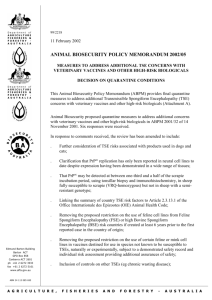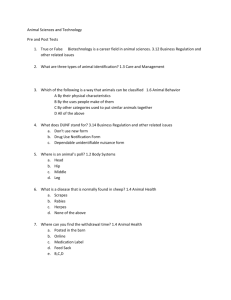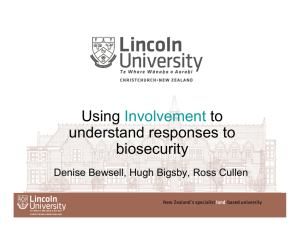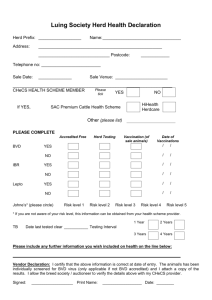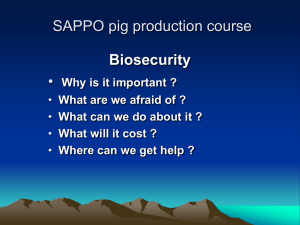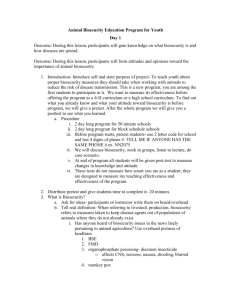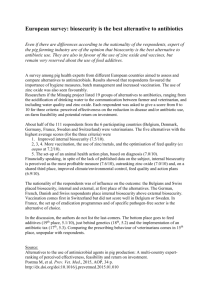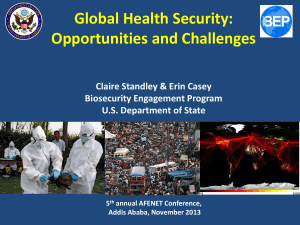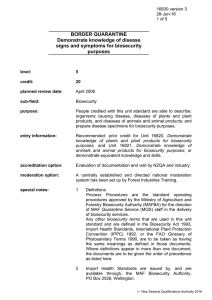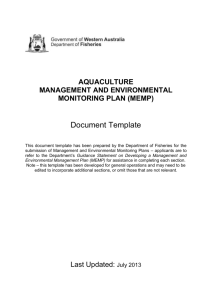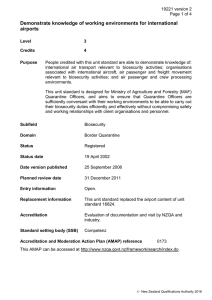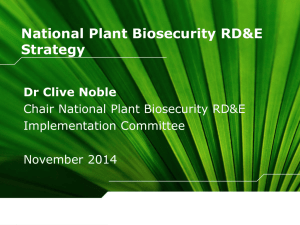Biosecurity for Camelid Owners
advertisement
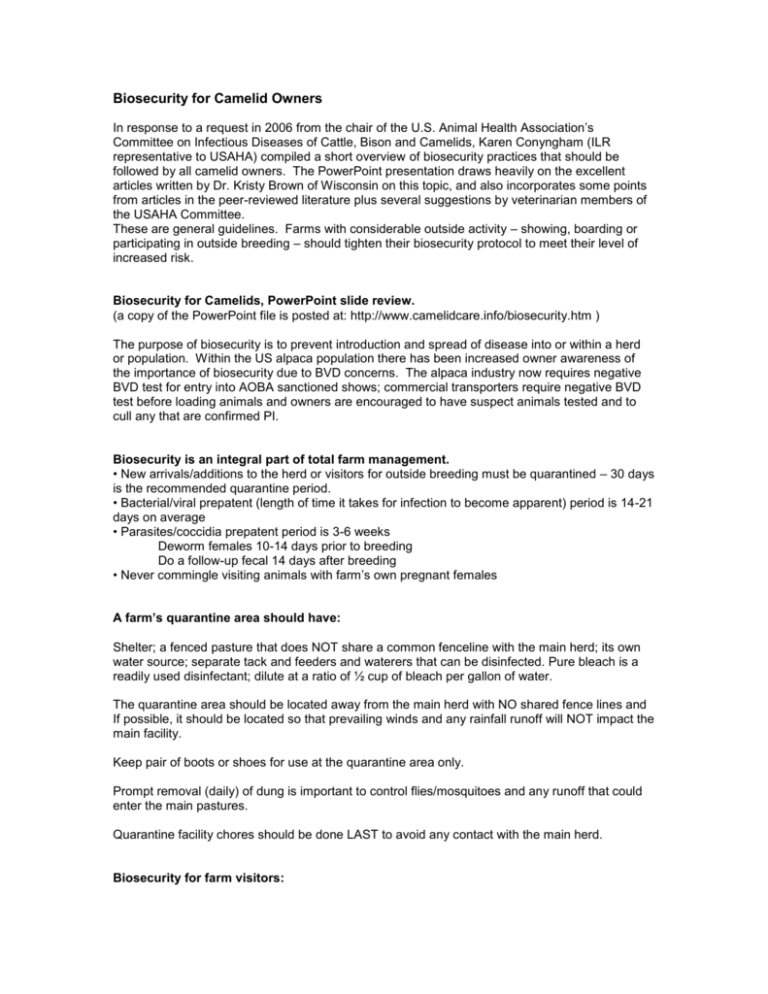
Biosecurity for Camelid Owners In response to a request in 2006 from the chair of the U.S. Animal Health Association’s Committee on Infectious Diseases of Cattle, Bison and Camelids, Karen Conyngham (ILR representative to USAHA) compiled a short overview of biosecurity practices that should be followed by all camelid owners. The PowerPoint presentation draws heavily on the excellent articles written by Dr. Kristy Brown of Wisconsin on this topic, and also incorporates some points from articles in the peer-reviewed literature plus several suggestions by veterinarian members of the USAHA Committee. These are general guidelines. Farms with considerable outside activity – showing, boarding or participating in outside breeding – should tighten their biosecurity protocol to meet their level of increased risk. Biosecurity for Camelids, PowerPoint slide review. (a copy of the PowerPoint file is posted at: http://www.camelidcare.info/biosecurity.htm ) The purpose of biosecurity is to prevent introduction and spread of disease into or within a herd or population. Within the US alpaca population there has been increased owner awareness of the importance of biosecurity due to BVD concerns. The alpaca industry now requires negative BVD test for entry into AOBA sanctioned shows; commercial transporters require negative BVD test before loading animals and owners are encouraged to have suspect animals tested and to cull any that are confirmed PI. Biosecurity is an integral part of total farm management. • New arrivals/additions to the herd or visitors for outside breeding must be quarantined – 30 days is the recommended quarantine period. • Bacterial/viral prepatent (length of time it takes for infection to become apparent) period is 14-21 days on average • Parasites/coccidia prepatent period is 3-6 weeks Deworm females 10-14 days prior to breeding Do a follow-up fecal 14 days after breeding • Never commingle visiting animals with farm’s own pregnant females A farm’s quarantine area should have: Shelter; a fenced pasture that does NOT share a common fenceline with the main herd; its own water source; separate tack and feeders and waterers that can be disinfected. Pure bleach is a readily used disinfectant; dilute at a ratio of ½ cup of bleach per gallon of water. The quarantine area should be located away from the main herd with NO shared fence lines and If possible, it should be located so that prevailing winds and any rainfall runoff will NOT impact the main facility. Keep pair of boots or shoes for use at the quarantine area only. Prompt removal (daily) of dung is important to control flies/mosquitoes and any runoff that could enter the main pastures. Quarantine facility chores should be done LAST to avoid any contact with the main herd. Biosecurity for farm visitors: • Keep a log of visitors – what other farms have they visited and when? • Provide shoes/boots for them to wear in animal areas. • Require hand washing before and after seeing the animals. • Do not allow general public access to the herd; provide photos of animals for advance review, then bring specific animals into a separate viewing area for visitors. • Make appointments for future visits for serious buyers. • Keep outside gates locked. Biosecurity at shows/sales: • Do not use communal dung piles. • Stall area should be under observation at all times. • Do not walk camelids in areas used by other species. • Do not encourage spectators to feed animals. • Quarantine show animals for 14-21 days upon returning home.
